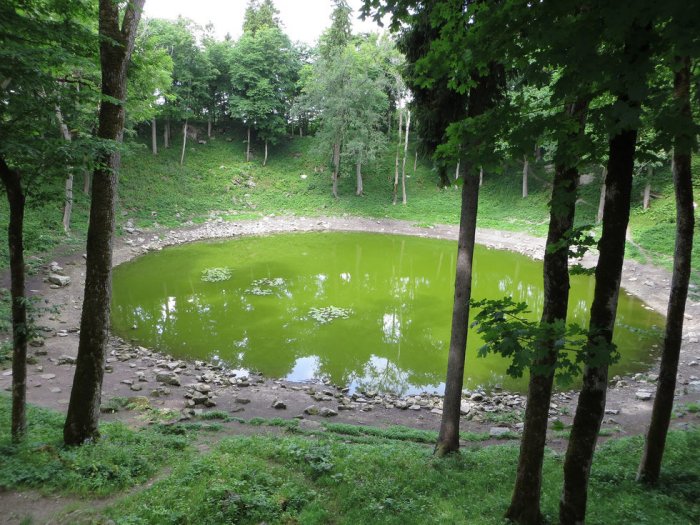Mysterious Kaali Crater And The Holy Lake – Sacred Ancient Places In Estonia
Ellen Lloyd - AncientPages.com - About 7,500 years ago, a giant meteorite slammed into the Earth, carving out a hole 110 m across Estonia's largest island, Saaremaa.
Several kilometers above the Earth’s surface, the meteorite broke into pieces from the pressure and heat of the atmosphere. When the meteorite pieces hit the ground, there was an explosion compared to a small nuclear bomb. The landscape changed completely and the blast created eight smaller craters nearby. The area is today known as the Kaali Meteorite Crater Field.
Kaali crater - A green pool of water at the largest meteorite craters at Kaali on Saaremaa island in Estonia. Credit: Brostad - Flickr
Ancient people considered objects that fell from space to be sacred. The Kaali crater and its lake became therefore a sacred site for centuries.
A Bronze Age cult built a large stone wall around the largest of the Kaali craters. The ancient ruins of this immense stone wall are still there today.
Archaeological evidence reveals that Kaali Lake, also known as Holy Lake was a place of offering for many centuries. The nearby forest is still called Puhamets, which means "Sacred Forest." There is no doubt this place was of great spiritual importance to our ancestors.
The stone wall surrounds the crater is interesting. The length of the wall was about 470 meters, its width around 2.5 meters, and its height to two meters.
Stones 1.5 to 1.8 meters in diameter were used in its construction, and the wall is stronger than any similar structures in the region. While excavating the site, researchers found evidence of a fortified settlement inhabited from the 5th to 7th century BC, a small hoard of silver jewelry from the 3rd to 5th centuries AD, and piles of domestic animal bones, some dating to as late as the 17th century.
Scientists think ancient offerings still remain undiscovered at the bottom of the six-meter-deep Kaali lake. Offerings continued to be made in secret long after the Church forbade such as "pagan " practices.
Silver ornaments have also been found that date to 300-500 A.D. Therefore, it is very probable that the lake was considered holy, and offerings were made there for centuries.
Credit: Wikipedia
Unfortunately, deposits of oak trees in the water prevent exploration of the lake. Scientists cannot probe beyond four meters below the surface, and we may never know what lies at the bottom of Kaali Lake.
The Holy Lake has been mentioned in many Estonian legends and is a subject of folklore. Lennart Georg Meri,(1929-2006), writer, translator, film-maker, diplomat, and politician, President of Estonia in 1992 - 2001, wrote in his book Hõbevalge" (Silverwhite) that he had found descriptions of the meteor's fall to earth in archaic runes. Kalevala 47 runes do indeed give a very realistic description of fire falling from the sky that burned houses, fields, fens, and humans.
Meri also suggested that the Baltic Jaanipaev (Midsummer) bonfire traditions are a reenactment of the event. There is no evidence of this, but the Kaali crater is a popular tourist destination today and we still don’t know what is hidden at the bottom of the lake.
Written by Ellen Lloyd – AncientPages.com
Updated on September 12, 2021
Copyright © AncientPages.com All rights reserved. This material may not be published, broadcast, rewritten or redistributed in whole or part without the express written permission of AncientPages.com
Expand for referencesMore From Ancient Pages
-
 Clurichaun – Little Naughty And Drunken Fellow Akin To Leprechaun In Irish Folklore
Featured Stories | Sep 13, 2019
Clurichaun – Little Naughty And Drunken Fellow Akin To Leprechaun In Irish Folklore
Featured Stories | Sep 13, 2019 -
 Artifacts Discovered In Ancient Florida Sinkhole Can Re-Write History Of North America
Archaeology | May 14, 2016
Artifacts Discovered In Ancient Florida Sinkhole Can Re-Write History Of North America
Archaeology | May 14, 2016 -
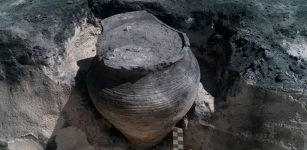 Extraordinary Discovery: Clay Vessel With Sour Soup For The Gods Found In Medieval Hut
Archaeology | Jun 4, 2017
Extraordinary Discovery: Clay Vessel With Sour Soup For The Gods Found In Medieval Hut
Archaeology | Jun 4, 2017 -
 LIDAR Images Reveal Cambodia’s Greater Angkor Region Was Home To 700,000-900,000 People
Archaeology | May 8, 2021
LIDAR Images Reveal Cambodia’s Greater Angkor Region Was Home To 700,000-900,000 People
Archaeology | May 8, 2021 -
 Cherokee Gourd Rattles – Protection Against Evil Spirits And Other Danger
Ancient Traditions And Customs | Jun 7, 2019
Cherokee Gourd Rattles – Protection Against Evil Spirits And Other Danger
Ancient Traditions And Customs | Jun 7, 2019 -
 Ancient Mystery Of The Enigmatic ‘Cat Men’ – Advanced Prehistoric Machines Or Humanoids? – Part 2
Featured Stories | Jan 20, 2021
Ancient Mystery Of The Enigmatic ‘Cat Men’ – Advanced Prehistoric Machines Or Humanoids? – Part 2
Featured Stories | Jan 20, 2021 -
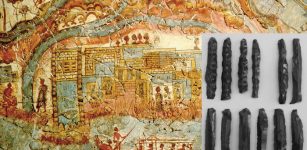 Analysis Of Ancient Tools Challenges Long-Held Ideas About What Drove Major Changes In Ancient Greek Society
Archaeology | Aug 23, 2022
Analysis Of Ancient Tools Challenges Long-Held Ideas About What Drove Major Changes In Ancient Greek Society
Archaeology | Aug 23, 2022 -
 Dragons And Dragon Kings In Ancient Mythology
Featured Stories | Mar 8, 2023
Dragons And Dragon Kings In Ancient Mythology
Featured Stories | Mar 8, 2023 -
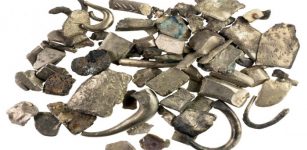 Hacksilber Hoard Dated To 11th Century BC: Eastern Mediterranean Silver Trade Reconstructed
Archaeology | Jul 5, 2021
Hacksilber Hoard Dated To 11th Century BC: Eastern Mediterranean Silver Trade Reconstructed
Archaeology | Jul 5, 2021 -
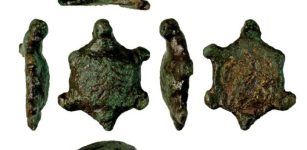 Roman Copper-Alloy Tortoise Figurine Discovered In Suffolk, UK
Archaeology | Dec 4, 2023
Roman Copper-Alloy Tortoise Figurine Discovered In Suffolk, UK
Archaeology | Dec 4, 2023 -
 Neanderthals Vanishing When Homo Sapiens Emerged In Europe Was Coincidental – Are Herbivores The Answer?
Evolution | Sep 29, 2023
Neanderthals Vanishing When Homo Sapiens Emerged In Europe Was Coincidental – Are Herbivores The Answer?
Evolution | Sep 29, 2023 -
 Mystery Of The Marble Lions On The Sacred Island Of Delos Solved?
Archaeology | Oct 12, 2021
Mystery Of The Marble Lions On The Sacred Island Of Delos Solved?
Archaeology | Oct 12, 2021 -
 What Is The Meaning Of Ankh – Ancient Egyptian Symbol
Ancient Symbols | Sep 21, 2023
What Is The Meaning Of Ankh – Ancient Egyptian Symbol
Ancient Symbols | Sep 21, 2023 -
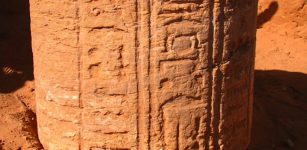 Abu Erteila’s Lost Temple And The Meroitic Empire: New Discoveries Shed Light On Nubian Civilization
Archaeology | Jan 14, 2016
Abu Erteila’s Lost Temple And The Meroitic Empire: New Discoveries Shed Light On Nubian Civilization
Archaeology | Jan 14, 2016 -
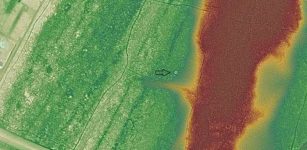 Satellites Discover Over 160 Hidden Ancient Mounds In North America
Archaeology | Aug 2, 2018
Satellites Discover Over 160 Hidden Ancient Mounds In North America
Archaeology | Aug 2, 2018 -
 Unexplained Encounters With Unknown Beings In California – Old And Modern Reports
Featured Stories | Mar 11, 2024
Unexplained Encounters With Unknown Beings In California – Old And Modern Reports
Featured Stories | Mar 11, 2024 -
 Neanderthal DNA Still Influence Modern Human Genes – Scientists Say
Archaeology | Mar 3, 2017
Neanderthal DNA Still Influence Modern Human Genes – Scientists Say
Archaeology | Mar 3, 2017 -
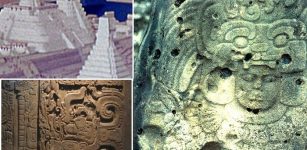 Tikal Of Maya: Sophisticated Culture That Experienced Humble Start, Golden Age, Wars And Decline
Featured Stories | Apr 4, 2022
Tikal Of Maya: Sophisticated Culture That Experienced Humble Start, Golden Age, Wars And Decline
Featured Stories | Apr 4, 2022 -
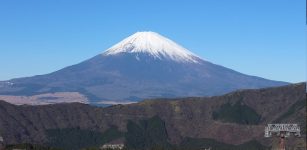 On This Day In History: Mount Fuji Erupted – On Dec 16, 1707
News | Dec 16, 2016
On This Day In History: Mount Fuji Erupted – On Dec 16, 1707
News | Dec 16, 2016 -
 Mystery Of The Anglo-Saxon Burial At Lowbury Hill May Soon Be Solved
Archaeology | Mar 7, 2023
Mystery Of The Anglo-Saxon Burial At Lowbury Hill May Soon Be Solved
Archaeology | Mar 7, 2023

